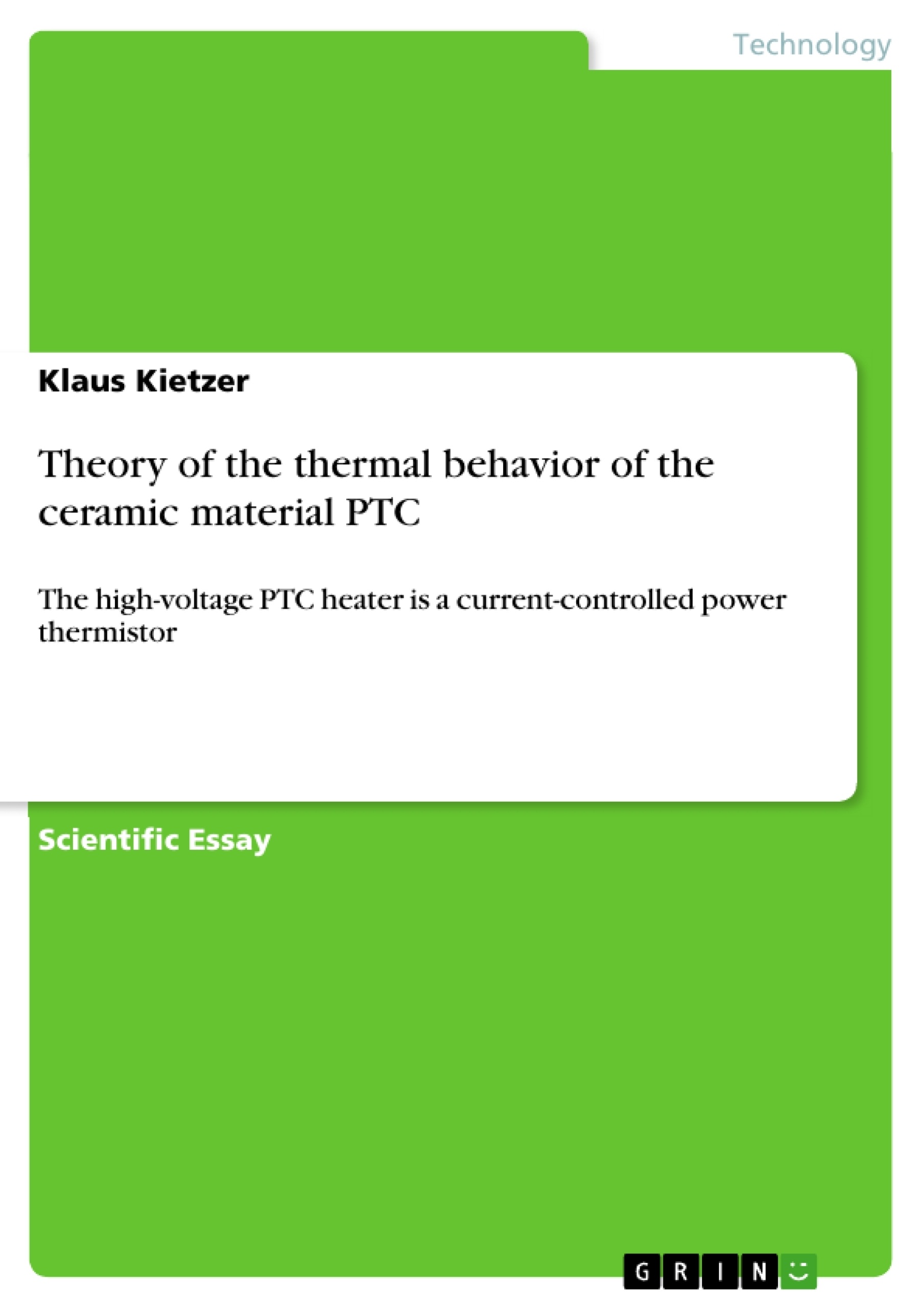The new material PTC has found its way into technology due to its special properties. The powdered ceramic raw material is prepared into a semi-finished product in a preparatory process by forming compression with subsequent sintering in order to be usable as a material with special properties.
The material PTC is a cubic electrical resistor with the special property of increasing the internal resistance by leaps and bounds when the Curie temperature is reached, in order to reduce the current flow in a small temperature range until it is completely switched off. The safety feature of the PCT is the decisive criterion compared to an electric heating wire to avert fire hazards in the event of inadequate cooling.
The PCT has been used in the automotive industry in low-voltage and high-voltage PTC heaters. Due to its special properties, PTC has been used in electrical components such as the PTC thermistor. In this article, a calculation method is developed for the material PTC in order to determine the thermal behavior of the PTC from an engineering point of view.
Inhaltsverzeichnis (Table of Contents)
- 1. Introduction
- 2. Der PTC-Baustein – ein potentialtheoretisches Problem
- 3. Analogous Relationships of Square PTC to Laminar Eddy-Free Potential Flow
- 4. Analogous Relationships of the Linear PTC to the Eddy-Free Potential Flow
- 5. Heat generation in a square PTC brick
Zielsetzung und Themenschwerpunkte (Objectives and Key Themes)
The objective of this article is to develop a calculation method for the thermal behavior of PTC material from an engineering perspective. This involves analyzing the potential theory application to PTC and drawing analogies between the material's behavior and potential flows.
- Potential theory application to PTC material
- Analogies between PTC behavior and potential flows
- Heat generation in square and linear PTC bricks
- Mathematical modeling of heat distribution in PTC
- Implications for PTC heater design and applications
Zusammenfassung der Kapitel (Chapter Summaries)
- Chapter 1: Introduction
This chapter introduces the PTC material and its unique properties, particularly its resistance behavior near the Curie temperature. It highlights the importance of PTC in automotive engineering and its use in electrical components like the PTC thermistor. The chapter emphasizes the need for a calculation method to understand PTC's thermal behavior.
- Chapter 2: Der PTC-Baustein – ein potentialtheoretisches Problem
This chapter discusses the structure of PTC heaters, specifically the rod-like design with layered PTC material. It introduces the concept of potential theory, applying it to the PTC cross-section, which acts as an isotropic field carrier. The chapter proposes that the potential theory can be used to describe the heat generation and conduction within the PTC material.
- Chapter 3: Analogous Relationships of Square PTC to Laminar Eddy-Free Potential Flow
This chapter uses an analog model of a water film flowing over a truncated cone to represent the behavior of a square PTC. The chapter establishes proportional relationships between the electric voltage and current in the PTC with the analogous quantities in the water flow model, leading to an expression for the heat generation per unit thickness.
- Chapter 4: Analogous Relationships of the Linear PTC to the Eddy-Free Potential Flow
This chapter presents an analog model for the linear PTC using a water wall with a laminar flow. Similar to the previous chapter, it establishes analogous quantities between the potential flow and the PTC, leading to an expression for the partial amount of heat generated in a solid element of the linear PTC.
- Chapter 5: Heat generation in a square PTC brick
This chapter focuses on the heat generation in a square PTC brick by integrating the heat generation expressions derived in previous chapters. It analyzes the heat distribution within the brick and the impact of the Curie temperature. The chapter includes graphical representations of the heat generation field and the temperature distribution, illustrating the heat generation and redistribution processes within the PTC brick.
Schlüsselwörter (Keywords)
The key topics covered in this article include PTC material, potential theory, analogous models, heat generation, Curie temperature, thermal behavior, potential flow, and applications of PTC in automotive engineering. These concepts are crucial for understanding the thermal behavior of PTC and its potential applications in various fields.
- Quote paper
- Klaus Kietzer (Author), 2024, Theory of the thermal behavior of the ceramic material PTC, Munich, GRIN Verlag, https://www.grin.com/document/1477994




